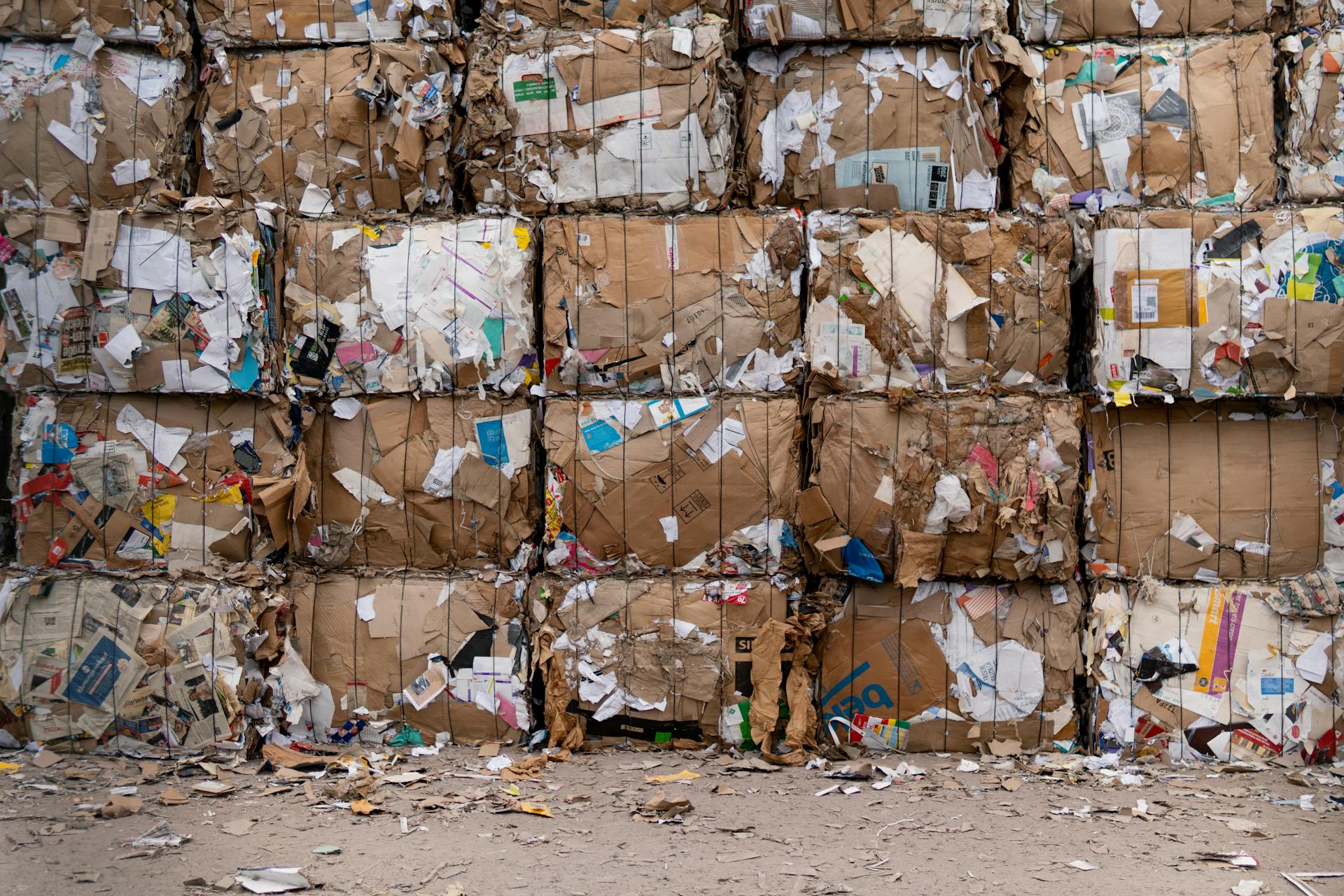Creating Sustainable Solutions with Circular Economy

The circular economy is not just a buzzword; it is a holistic system that can reshape industries, create new business opportunities, and contribute to a more sustainable future. By embracing the principles of circularity, organizations can reduce waste, conserve natural resources, and foster a more resilient and environmentally-friendly economic model.
Understanding the Principles of Circular Economy
The circular economy is built on three fundamental principles:
- Design out waste and pollution: This principle focuses on eliminating waste and harmful by-products throughout the product life cycle, from the design stage to the end-of-life stage.
- Keep products and materials in use: The goal is to maintain the value of products, components, and materials for as long as possible through strategies like reuse, repair, remanufacturing, and recycling.
- Regenerate natural systems: The circular economy aims to replenish and restore natural resources, ensuring that the impact on the environment is minimized and that ecosystems can thrive.
These principles work together to create a closed-loop system, where resources are continuously cycled back into the production process, reducing the need for virgin materials and minimizing waste.
The Benefits of Adopting a Closed-Loop Economy Approach
Transitioning to a closed-loop economy can bring about a multitude of benefits for businesses, the environment, and society as a whole:
- Environmental Benefits:
- Reduced resource consumption and waste generation
- Decreased greenhouse gas emissions and carbon footprint
- Preservation of natural habitats and biodiversity
- Economic Benefits:
- Cost savings through efficient use of resources
- New revenue streams and business opportunities
- Increased competitiveness and resilience in the market
- Social Benefits:
- Creation of new job opportunities in the circular economy sector
- Improved public health and well-being due to reduced pollution
- Fostering of a more sustainable and equitable society
By embracing the circular economy, organizations can not only contribute to environmental sustainability but also unlock new avenues for growth and innovation.
Also read: Unleashing the Power of the Sun: How Does Solar Energy Work?
Circular Economy Examples in Different Industries
The circular economy principles can be applied across various industries, each with its unique challenges and opportunities. Here are some examples of how closed-loop economy is being implemented in different sectors:
- Manufacturing:
- Remanufacturing of products, such as automotive parts and electronic devices
- Design for disassembly and easy repair to extend product life
- Fashion and Textiles:
- Recycling and upcycling of textile waste
- Rental and resale models for clothing
- Construction and Real Estate:
- Modular and adaptable building design
- Reuse and repurposing of construction materials
- Food and Agriculture:
- Composting and anaerobic digestion of food waste
- Precision farming techniques to optimize resource use
- Energy and Utilities:
- Recycling and recovery of critical materials from e-waste
- Renewable energy generation and storage
These examples demonstrate the diverse applications of closed-loop economy principles and the potential for transformative change across various industries.
Case Studies of Successful Circular Economy Initiatives
- IKEA’s Furniture Take-Back and Resale Program:
- IKEA, the global furniture retailer, has implemented a successful furniture take-back and resale program, allowing customers to return used furniture in exchange for store credit.
- The returned furniture is then refurbished, repaired, or recycled, and resold at a discounted price, extending the life of the products.
- This initiative has not only reduced waste but also created new revenue streams for the company.
- Patagonia’s Worn Wear Program:
- Patagonia, the outdoor apparel company, has launched the Worn Wear program, which encourages customers to repair, reuse, and recycle their Patagonia products.
- The program offers repair services, a used gear trade-in and resale platform, and educational resources to help customers extend the life of their clothing.
- By promoting product longevity and responsible consumption, Patagonia has positioned itself as a leader in the circular economy movement.
- Philips’ Circular Lighting Solutions:
- Philips, the electronics and lighting company, has developed a circular lighting-as-a-service model, where they retain ownership of the lighting equipment and provide lighting solutions to customers.
- The company is responsible for the maintenance, repair, and eventual recycling of the lighting fixtures, ensuring that the materials are kept in use for as long as possible.
- This business model has enabled Philips to reduce waste, conserve resources, and provide a more sustainable lighting solution to its customers.
These case studies demonstrate the real-world application of closed-loop economy principles and the tangible benefits that can be achieved across different industries.

Challenges and Barriers to Implementing Circular Economy Practices
While the circular economy offers tremendous potential, there are several challenges and barriers that organizations may face when transitioning to this new model:
- Technological Limitations: The lack of advanced recycling technologies, efficient product design, and effective reverse logistics systems can hinder the implementation of circular economy practices.
- Financial Barriers: The upfront costs associated with implementing circular economy initiatives, such as investment in new infrastructure and equipment, can be a significant deterrent for some organizations.
- Regulatory Uncertainty: Inconsistent or underdeveloped policies and regulations surrounding the circular economy can create uncertainty and slow down the adoption of circular practices.
- Consumer Behavior and Mindset: Changing consumer attitudes and behaviors, such as shifting towards more sustainable consumption patterns, can be a slow and challenging process.
- Lack of Collaboration and Coordination: Effective implementation of circular economy often requires cross-industry collaboration and coordination, which can be difficult to achieve.
Overcoming these challenges will require a concerted effort from policymakers, businesses, and consumers to create an enabling environment for the circular economy to thrive.
Also read: COP29 in Azerbaijan: Exploring the Future of Climate Action
Circular Economy Strategies for Businesses
Businesses can adopt various strategies to embrace the circular economy and reap its benefits:
- Design for Circularity: Incorporate circular design principles, such as modular design, use of recyclable materials, and ease of disassembly, into the product development process.
- Implement Reverse Logistics: Establish efficient reverse logistics systems to collect, sort, and process used products, components, and materials for reuse, remanufacturing, or recycling.
- Explore New Business Models: Transition from a traditional linear model to innovative business models, such as product-as-a-service, sharing platforms, and take-back schemes, that align with the principles of the circular economy.
- Foster Stakeholder Collaboration: Engage with suppliers, customers, and other industry partners to create a collaborative ecosystem that supports the circular economy.
- Invest in Circular Economy Enablers: Allocate resources towards research and development, employee training, and the adoption of enabling technologies, such as digital platforms and advanced recycling technologies.
- Measure and Communicate Progress: Establish key performance indicators (KPIs) to track the impact of circular economy initiatives and communicate the company’s progress to stakeholders.
By adopting these strategies, businesses can position themselves as leaders in the circular economy and contribute to a more sustainable future.
Circular Economy and Sustainability
The circular economy and sustainability are intrinsically linked, as they both aim to address the pressing environmental and resource challenges faced by our planet. While sustainability focuses on the broader goal of maintaining the balance between human activities and the natural environment, the circular economy provides a practical framework for achieving this goal.
By implementing circular economy principles, businesses can reduce their environmental footprint, conserve natural resources, and contribute to the overall sustainability of their operations and the wider ecosystem. The circular economy’s emphasis on waste reduction, resource recovery, and regenerative design aligns with the core objectives of sustainability, creating a synergistic relationship between the two concepts.
As businesses and policymakers increasingly recognize the importance of sustainability, the circular economy has emerged as a powerful tool for driving tangible and measurable progress towards a more sustainable future.
Also read: The Remarkable Benefits of Planting Trees: Enhancing Our Environment and Quality of Life
Policies and Regulations
Governments and policymakers play a crucial role in creating an enabling environment for the circular economy to thrive. Through the development of supportive policies and regulations, they can incentivize businesses, consumers, and other stakeholders to adopt closed-loop economy practices.
Some of the key policy and regulatory measures that can promote the circular economy include:
- Extended Producer Responsibility (EPR) Schemes: Policies that hold producers responsible for the end-of-life management of their products, encouraging them to design for circularity.
- Waste Management Regulations: Legislation that mandates waste separation, recycling targets, and the diversion of waste from landfills.
- Incentives and Subsidies: Financial incentives, such as tax breaks or grants, to support the development of circular economy infrastructure and technologies.
- Public Procurement Policies: Incorporating closed-loop economy criteria into government procurement processes to create demand for sustainable products and services.
- Awareness and Education Campaigns: Initiatives that educate and empower consumers, businesses, and the general public about the benefits of the circular economy.
By aligning policies and regulations with the principles of the circular economy, governments can drive systemic change and create an environment that fosters innovation, investment, and the widespread adoption of circular practices.
The Future of Circular Economy and Its Impact on Industries
As the global community becomes increasingly aware of the need for sustainable solutions, the circular economy is poised to play a pivotal role in shaping the future of various industries. In the years to come, we can expect to see the following trends and developments:
- Accelerated Technological Advancements: Continued investment in research and development will lead to breakthroughs in areas such as advanced recycling, material science, and digital platforms that enable closed-loop economy practices.
- Emergence of New Business Models: Innovative business models that align with the principles of the closed-loop economy, such as product-as-a-service, will become more prevalent, disrupting traditional linear models.
- Increased Collaboration and Partnerships: Businesses, policymakers, and other stakeholders will work together to create closed-loop economy ecosystems, fostering cross-industry collaboration and knowledge-sharing.
- Shift in Consumer Behavior: Consumers will become more conscious of their environmental impact and demand sustainable products and services, driving businesses to adapt their offerings accordingly.
- Strengthened Circular Economy Policies and Regulations: Governments and policymakers will continue to develop and refine policies and regulations that incentivize and mandate the adoption of closed-loop economy practices.
As these trends unfold, industries across the board will be compelled to rethink their operations, supply chains, and business models to align with the circular economy. This transformation will not only contribute to environmental sustainability but also unlock new opportunities for growth, innovation, and competitiveness.
Conclusion
The circular economy presents a transformative approach to addressing the pressing environmental and resource challenges of our time. By transitioning from a linear to a circular model, businesses and industries can unlock a wealth of benefits, including reduced waste, conserved natural resources, and enhanced competitiveness.
Through the implementation of circular economy principles, such as design for circularity, reverse logistics, and innovative business models, organizations can pave the way for a more sustainable future. However, this transition requires a collaborative effort involving businesses, policymakers, consumers, and other stakeholders.
By embracing the closed-loop economy, businesses can not only reduce their environmental impact but also unlock new revenue streams and enhance their long-term resilience.
The future of the circular economy is promising, with the potential to reshape industries, drive technological advancements, and foster a more sustainable and equitable society. By taking bold steps to implement closed-loop economy strategies, we can collectively create a brighter, more sustainable future for all.
Also read: The Ultimate Guide to Zero Waste Living: How to Minimize Waste and Maximize Sustainability




